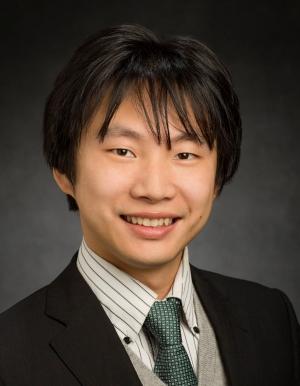The AE researcher is joining the steering committee of a new group that will make service, assembly, and manufacturing capabilities a routine part of space mission design.
Associate Professor Koki Ho has been selected to join a NASA-funded consortium working to reimagine how space missions are planned and designed so that satellites, probes, and other vehicles can be repaired or upgraded in space.
NASA formed the group to make these capabilities a routine part of mission design, and Ho is one of the inaugural steering committee members who will guide the effort. It’s a natural fit for his research, which focuses on exactly this kind of in-space servicing, assembly, and manufacturing (or ISAM, in NASA parlance).
“Space logistics and in-space refueling and servicing have been my research interests for more than 10 years, and I am excited that this field is being recognized as critical to future space exploration,” said Ho, Dutton-Ducoffe Professor in the Daniel Guggenheim School of Aerospace Engineering. “I am excited to contribute to this initiative as a research leader in this field and work with leaders in government and industry to grow this field further.”
NASA wants to extend the life of spacecraft and create a more robust, sustainable space ecosystem by making it possible to repair, refuel, or even upgrade spacecraft in low-Earth orbit and cislunar space, the region between the Earth and moon.
Up to now, when satellites or probes have exhausted their fuel supply, been damaged, or simply reached the end of their mission, they’ve been shut down or lost. Even when they’re otherwise still functioning.
“While the development of space robotics technologies can support individual ISAM missions, it is imperative to establish a resilient, sustainable, and flexible Earth/cislunar logistics ecosystem to support and enable future space operations,” Ho said. “This new paradigm will enable spacecraft to be refueled, repaired, serviced, assembled, and manufactured in orbit routinely, similar to the maintenance and manufacturing of terrestrial assets. COSMIC — and my own research career goals — aim to make ISAM a routine part of space architectures and mission lifecycles.”
The Consortium for Space Mobility and ISAM Capabilities (COSMIC) officially started its work in November, including naming the initial steering committee. Ho is one of just two academic researchers among the 12 members, who will lay out the consortium’s priorities and guide implementation of this new approach to designing spacecraft and missions.
“Academia plays two critical roles: fundamental research and education. I hope to bring both perspectives to the committee,” he said. “Georgia Tech is one of the leaders in the world in space mobility, logistics, and ISAM, with at least 10 researchers who have overlapping interests with this topic. I also hope to enable Georgia Tech to engage more with government and industry players through this consortium.”
Ho’s appointment to the steering committee comes at an opportune time. He currently leads the Space Logistics Technical Committee for the American Institute of Aeronautics and Astronautics, which gives him the opportunity to facilitate collaborations across the different groups. He also recently received a multimillion dollar grant from the Air Force Office of Scientific Research to improve space logistics and mobility.
